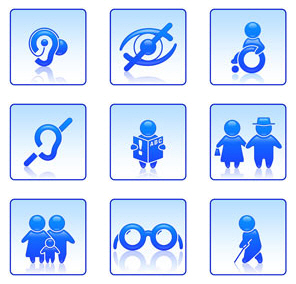Your cart is currently empty!

5 Easy to Miss Accessibility Issues
Making sure that everyone has access to your website is important, just in principle. It can also be important for the bottom line at your business. When your site is hard for prospective customers to read, they’ll go elsewhere — people have lots of choices online.
We’ve written before about the most common accessibilty issues:
- Acessibility and Visibility
- The Light on Dark Website
- Websites for the Tech Challenged
- Planning a Website for Older Users
- Using Flash Correctly
We do our best to persuade clients that they need high contrast text, navigation buttons that look like navigation and also like buttons, and alternate content for their Flash, videos, and images.
We also posted once about the Web Accessibility Initiative. I probably should have posted more than once. I was recently reminded of some things I hadn’t thought about much. Have you overlooked these accessibility issues?
- Assistive devices like screen readers can’t currently recognize the new semantic markers in HTML5. We might think that this is a problem with screen readers, but until they get it together, it’s also a problem with our HTML5 sites.
- People using screen readers may turn off Javascript on their computers. If they do, then they are not counted by Google Analytics, or other analytics programs using Javascript.
- Mobility limitations can keep people from using a mouse; many tech adaptations for people with limited use of their hands are modified keyboards. What’s more, a mouse requires vision to operate, while a keyboard may be operated by touch. If your navigation relies on hovering with a mouse, you’re shutting people out of your site.
- If color conveys meaning on your page (beyond the most abstract understanding of the phrase), people who are colorblind or using screen readers will miss it. Having required fields in a form in a different color, for example, or color coding a table without providing a summary of the data — this kind of use of color limits access.
- There are disabilities that make it more likely that a user will make an error. People with limited access to or comfort with computers are also more likely to misunderstand or to make errors with websites that rely on tech knowledge. For example, it’s more common now to use the site logo as a Homepage button. What if you didn’t know that? How would you find the homepage?
When you design a new site, or update or redesign your website, consider these factors. If your population includes people with special needs, you have to make accessibility a high priority. If your population doesn’t include people with special needs — are you sure it doesn’t? Why limit your audience in that way?
by
Tags:

Leave a Reply